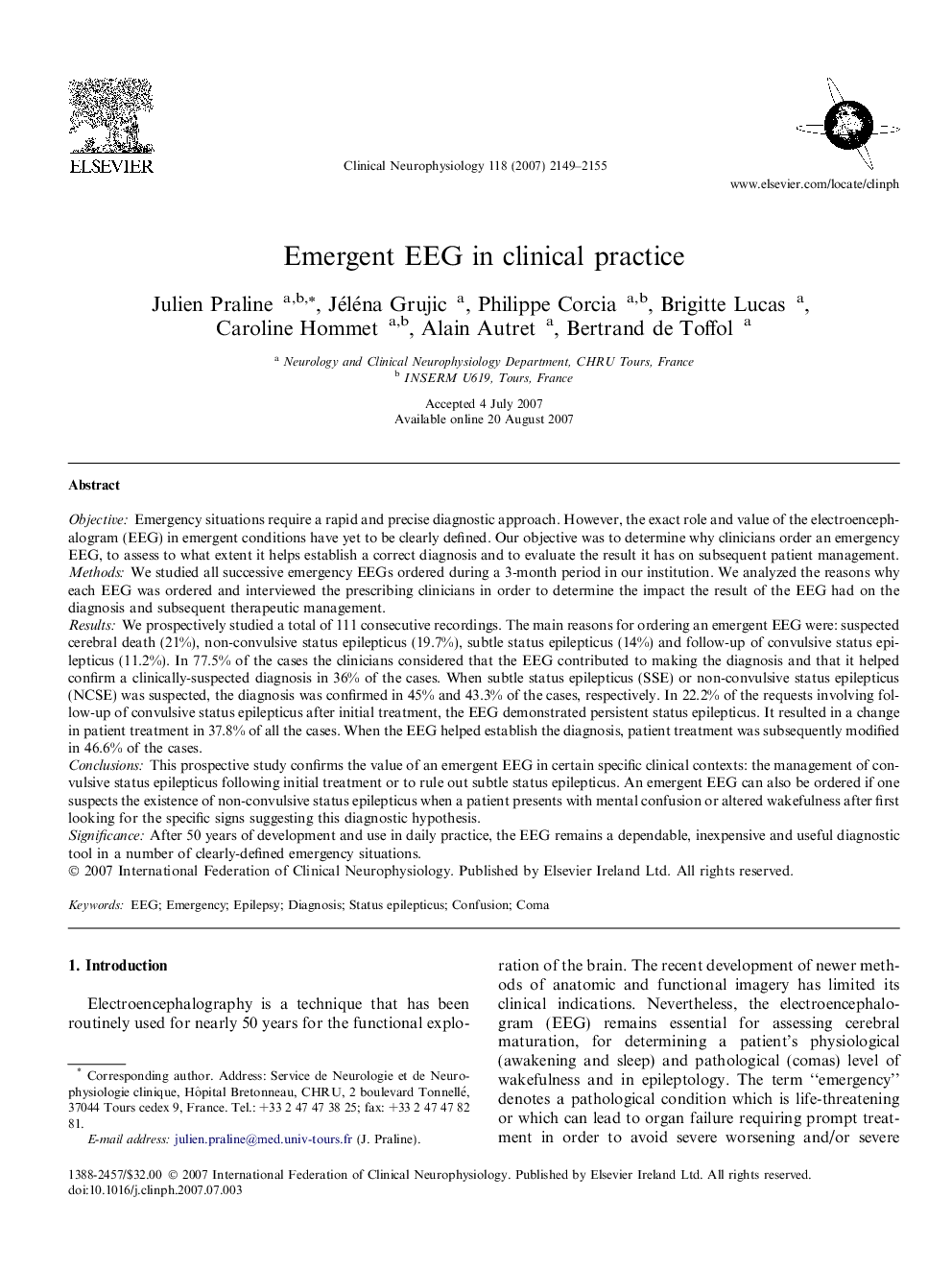| کد مقاله | کد نشریه | سال انتشار | مقاله انگلیسی | نسخه تمام متن |
|---|---|---|---|---|
| 3048354 | 1185080 | 2007 | 7 صفحه PDF | دانلود رایگان |

ObjectiveEmergency situations require a rapid and precise diagnostic approach. However, the exact role and value of the electroencephalogram (EEG) in emergent conditions have yet to be clearly defined. Our objective was to determine why clinicians order an emergency EEG, to assess to what extent it helps establish a correct diagnosis and to evaluate the result it has on subsequent patient management.MethodsWe studied all successive emergency EEGs ordered during a 3-month period in our institution. We analyzed the reasons why each EEG was ordered and interviewed the prescribing clinicians in order to determine the impact the result of the EEG had on the diagnosis and subsequent therapeutic management.ResultsWe prospectively studied a total of 111 consecutive recordings. The main reasons for ordering an emergent EEG were: suspected cerebral death (21%), non-convulsive status epilepticus (19.7%), subtle status epilepticus (14%) and follow-up of convulsive status epilepticus (11.2%). In 77.5% of the cases the clinicians considered that the EEG contributed to making the diagnosis and that it helped confirm a clinically-suspected diagnosis in 36% of the cases. When subtle status epilepticus (SSE) or non-convulsive status epilepticus (NCSE) was suspected, the diagnosis was confirmed in 45% and 43.3% of the cases, respectively. In 22.2% of the requests involving follow-up of convulsive status epilepticus after initial treatment, the EEG demonstrated persistent status epilepticus. It resulted in a change in patient treatment in 37.8% of all the cases. When the EEG helped establish the diagnosis, patient treatment was subsequently modified in 46.6% of the cases.ConclusionsThis prospective study confirms the value of an emergent EEG in certain specific clinical contexts: the management of convulsive status epilepticus following initial treatment or to rule out subtle status epilepticus. An emergent EEG can also be ordered if one suspects the existence of non-convulsive status epilepticus when a patient presents with mental confusion or altered wakefulness after first looking for the specific signs suggesting this diagnostic hypothesis.SignificanceAfter 50 years of development and use in daily practice, the EEG remains a dependable, inexpensive and useful diagnostic tool in a number of clearly-defined emergency situations.
Journal: Clinical Neurophysiology - Volume 118, Issue 10, October 2007, Pages 2149–2155